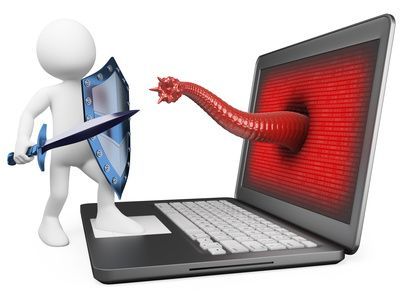Most computer users know that they need an antivirus to protect their machines from the many threats of the modern web. While there are plenty of free antivirus programs, many of them stay free by constantly bugging you to upgrade to the paid version or installing some unnecessary browser  extension.
If you’re installing an antivirus for a novice computer user, you don’t want them confused by all kinds of nagging popups. Even advanced users get tired of these.
extension.
If you’re installing an antivirus for a novice computer user, you don’t want them confused by all kinds of nagging popups. Even advanced users get tired of these.
To this end, we’ve picked out some free antivirus suites that don’t constantly nag you or install a bunch of unnecessary junk. We’ve started with the cleanest solutions and end with a few that have popups by default, but are easily disabled by flipping one setting.
Windows Defender Let’s start with the default antivirus in Windows 10. Windows Defender had some issues in its infancy, but it’s grown into a solid antivirus with several pros in its corner.
One of the biggest reasons to use it is the complete lack of nag screens. There’s no premium version of Windows Defender, so you won’t ever see a popup asking you to pay for it. Windows Defender sits quietly and does its job, only alerting you if there’s an issue. You don’t have to worry about any “special offers” with this solution, either. Finally, Windows Defender updates through Windows Update, which is automatic in Windows 10.
Sophos Home Sophos isn’t one of the biggest names in antivirus programs, but it’s still an excellent contender. You’ll have to register for an account before you download the antivirus, but it’s a small inconvenience for a nag-free antivirus tool. The installer is pretty large, so it might take several minutes to get it set up.
Once Sophos is ready, you’ll find that opening it results in a simple panel with no ads. Click Manage My Security to open Sophos’s website, where you can sign in and manage how the antivirus runs. Open the Configure tab, and you can even set up basic web filtering for your computer. You can block or issue a warning for categories like gambling, violence, and alcohol.
Immunet The open source antivirus ClamAV has been around on Linux for a while, and developers have ported it to other platforms too. The standard Windows client hasn’t seen an update in over a year. However, ClamAV recommends you try Immunet, a full antivirus published by Cisco and powered by ClamAV’s engine.
Immunet doesn’t have a paid version, so there’s zero nag screens or bloatware to worry about. What makes this antivirus unique is that it’s community-based — if the app detects an infection on someone’s system, it automatically blocks it for everyone else who uses Immunet. Even better, it only takes up a few MB of space.
Bitdefender Antivirus Free Bitdefender is another great beginner-friendly antivirus. It doesn’t present tons of options to confuse you, and like any good antivirus should, it sits quietly in the background protecting your PC. There’s also no bundled junk to watch out for during the installation.
Once you’ve activated Bitdefender, click the gear icon at the top of the window and select Account info. Disable the Display notifications with special offers option to prevent popups for the paid version of Bitdefender from showing up. After that, you shouldn’t need to pop open its panel again.
Panda Free Antivirus Panda is a solid third-party antivirus. It includes a few “special offers” during installation and you must disable its ads, but doing so is easy enough so we’ve included it in the fifth spot here.
When you install it, make sure to uncheck the three boxes to avoid installing Panda’s useless browser extension and changing your homepage and search provider. Panda will ask for an email address to create an account when you launch it, but you can close this as the app works fine without it.
Once you have Panda installed, you need to flip one setting to disable all annoyances. Open the app and click the Menu icon in the upper-left corner of the window. Select Settings and scroll down to the bottom of the General tab. Uncheck Show Panda news and Show relevant security news here.
Now Panda will keep quiet unless it detects a problem. Plus, Panda doesn’t pile a load of extra garbage into its free offering. Since it’s a cloud antivirus, this makes for a relatively light package.
Avira Avira is one of the “big three” antivirus providers (along with Avast and AVG), and arguably the least annoying of them. As long as you avoid installing the extra junk, it’s a relatively light antivirus. However, while we didn’t see any in our testing, some users have reported that Avira occasionally displays a popup advertising its premium product. Thus we excluded it from the main list above, but still included it here in case you hate all five of the above solutions.
When you head to Avira’s download page, make sure you download the Free Antivirus and not Free Security Suite when offered. The latter packs in a ton of bloat that you don’t need.
Once Avira starts installing, avoid installing any of the extra nonsense. Don’t click Install for free on any of the extras like Avira Safe Shopping and Avira System Speedup. You can click the Skip all text in the upper-right and wait for Avira to finish up the install.
If you dig into Avira’s settings by clicking the Settings gear in the bottom-left of the program’s window, you can select General, then turn off Acoustic alerts and Warnings if you wish. These are actual problems that you may want notifications for, however.










